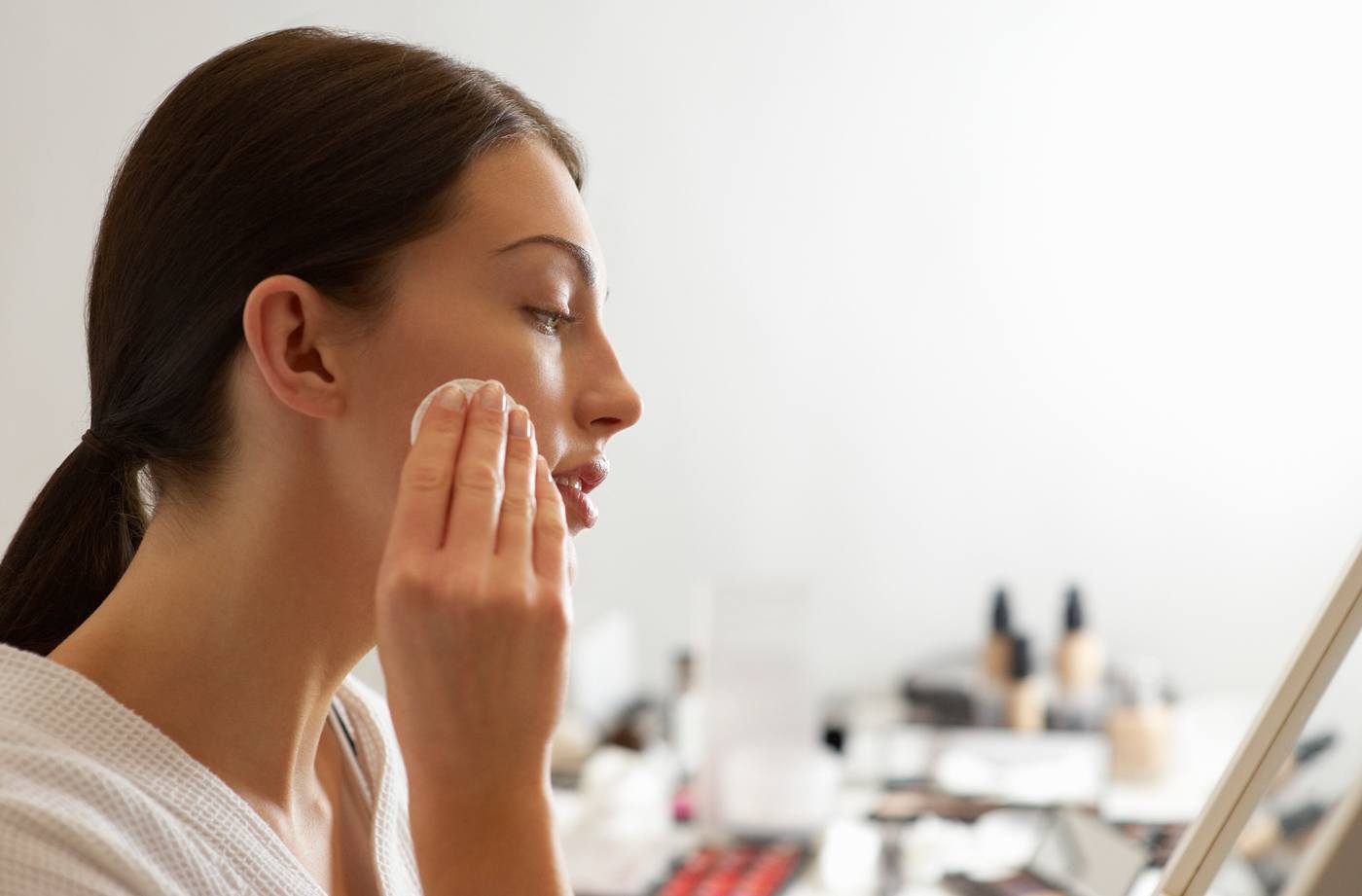If Your Skin Is a Smidge Dramatic (Read: Sensitive), Here’s How to Cleanse
Sensitive skin types might as well have their own Bravo reality TV show. You wash: They get irritated. You tone: They get irritated. You serum: Well, you get the picture (they get irritated). Anything can create a reaction, leading to an angry complexion. I'm talking harsh ingredients, too much pollution, and even the wind blowing in a certain way (okay, kidding on the last one).
So when it comes to cleansing, a particularly mechanical skin-care step, it's important to have a game plan to side step any irritation that might want to rear its ugly head. "The basic function of cleansing is to remove dirt, oil, and dead skin cells," says Debbi Burnes, natural beauty expert and founder of Sumbody Skincare. "So you want to attack the glue that's adhering gunk to your pores, but, with sensitive skin, you don't want to mess with the skin's natural mantle."
This involves following several rules that ensure that lathering up isn't going to cause any...drama.
Keep reading for the 5 basic rules about cleansing for sensitive skin, according to skin-care pros.

Use tepid water
I know it feels good, but using really hot water does more harm than you'd think. "Nobody should be cleansing with hot water," says Burnes. "Especially with sensitive skin, you really want to be sure to use lukewarm water. You can see the drying effects if you use hot water on your skin." Esthetician and founder of MV Skincare Sharon McGlinchey also adds that you should be cleansing at the sink—not the shower because you can better control the water temperature. (Most of us shower with our backs to the faucet, which prevents the steamy stream from hitting us directly in the face.) Post cleansing, pat your face with a washcloth rather than wiping it down, according to McGlinchey, so that you don't irritate the skin's outer layer—but leave your skin slightly damp so that your products can better penetrate for lasting hydration.

{{post.sponsorText}}
Opt for a non-foaming cleanser
You may have loved the squeaky-clean feeling that comes from a satisfyingly foamy cleanser when you were younger, but they're not always actually good for your complexion—especially if your skin falls on the sensitive side. "Look for a non-foaming cleanser in which you can recognize all the ingredients," says Burnes. "Foaming types typically have sodium lauryl sulfate and that ingredient's cousins which are too harsh for sensitive skin types." Milky, creamy cleansers are nice and gentle, but she also recommends an old-fashioned, natural bar soap that's full of super fats like avocado or shea butter.
Steer clear of manual exfoliants
Sloughing off your dead skin is always necessary, but some methods are harsher than others. "If you have sensitive skin, you want to be careful with manual exfoliants," says Burnes. "Stay away from apricot kernels and anything that's not dissolvable in water. Pieces like that will have jagged edges that can't get completely spherical, so they create micro tears in the skin, which you want to avoid." One brand that makes a physical exfoliant gentle enough for the most sensitive skin types? Peet Rivko. The brand's Exfoliator ($34) uses gentle jojoba beads, oatmeal, and rice bran to lift away dead skin cells. Alternatively, you can opt for scaled-back use of an easy-does-it chemical exfoliant like an AHA. Hot tip: Leave it on for half the time the label says to do the job, minus the irritation.
Less is more
It can be tempting to try a bunch of different products when figuring out your beauty routine. In the case of having a sensitive complexion, however, simplicity is key—you should keep things as streamlined as possible. "Reduce the amount of ingredients you're using," recommends Burnes. "Just like you don't eat food with ingredients you don't recognize in it, do the same with your skin care." Doing this results in your skin absorbing less toxins and therefore being much happier.
Look in your kitchen
If the thought of deciphering beauty ingredient labels is overwhelming, you can always turn to your pantry. "I always like to teach people that they can easily use something at home as a cleanser," says Burnes. "You can just use a coconut or soy milk and a gentle splash of warm water, or make a paste out of the oatmeal you had for breakfast. Oatmeal with honey works as a great cleanser, too." The less you introduce to your skin, the less chance of having any problems.
If you're looking for more beauty inspo, here are some French girl skin-care tips. And these are the best supplements for clear, glowy skin.
Loading More Posts...